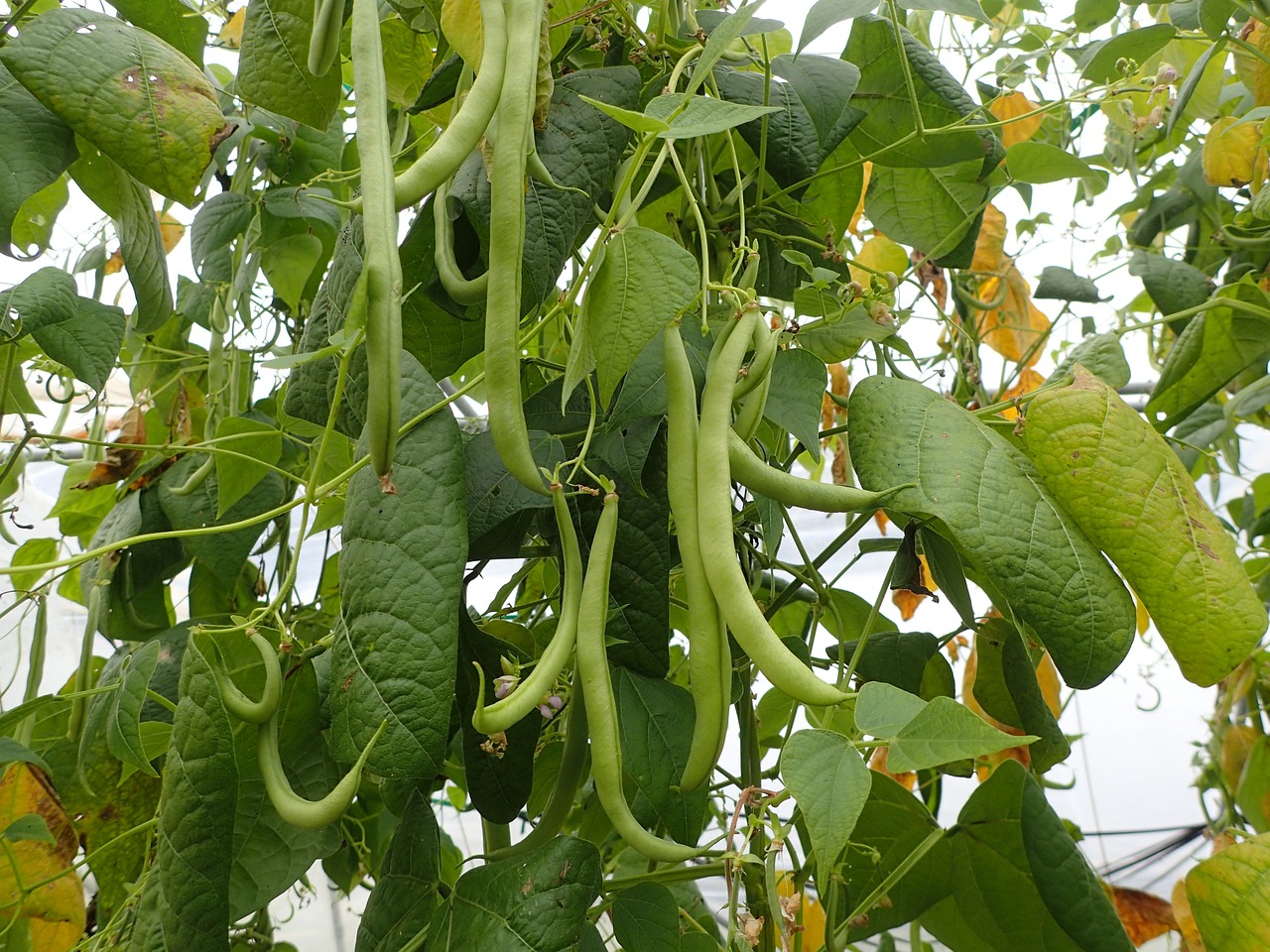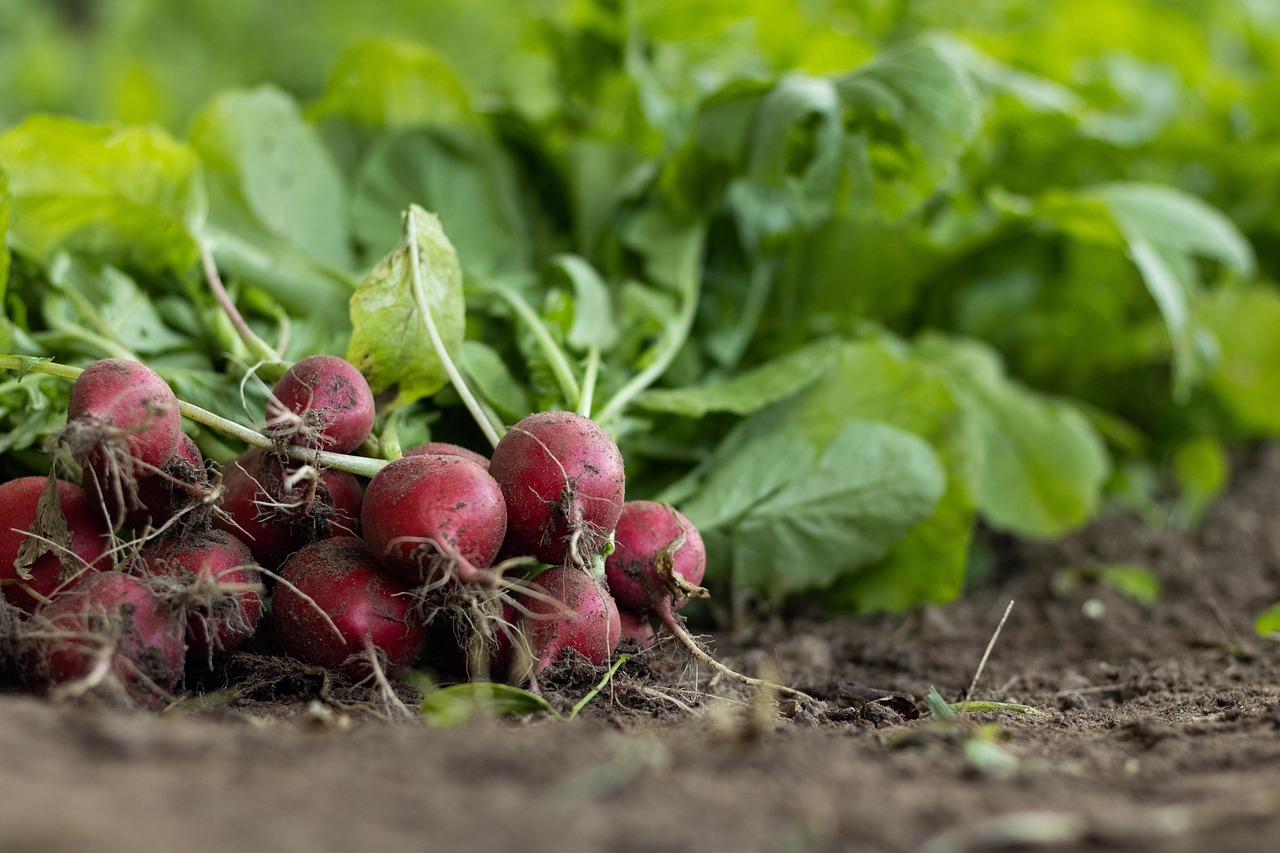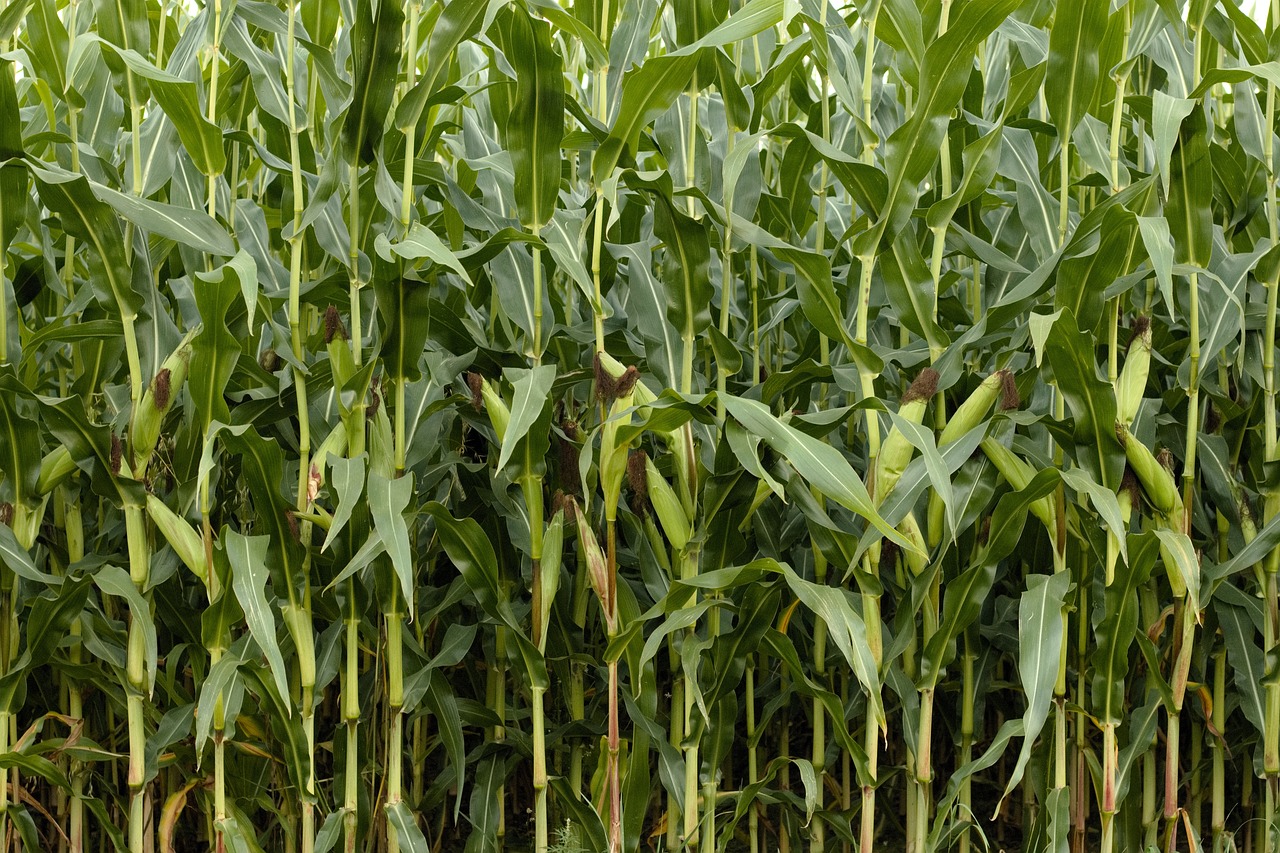Whether they are steamed, sautéed, blanched, or roasted, green beans are known for their ability to complement a wide range of flavors and ingredients. They’re a popular addition to many cuisines and are often appreciated for their nutritional content and versatility in the kitchen, therefore, a valuable addition to a home vegetable garden.
Here’s a guide on how to grow and care for green beans:
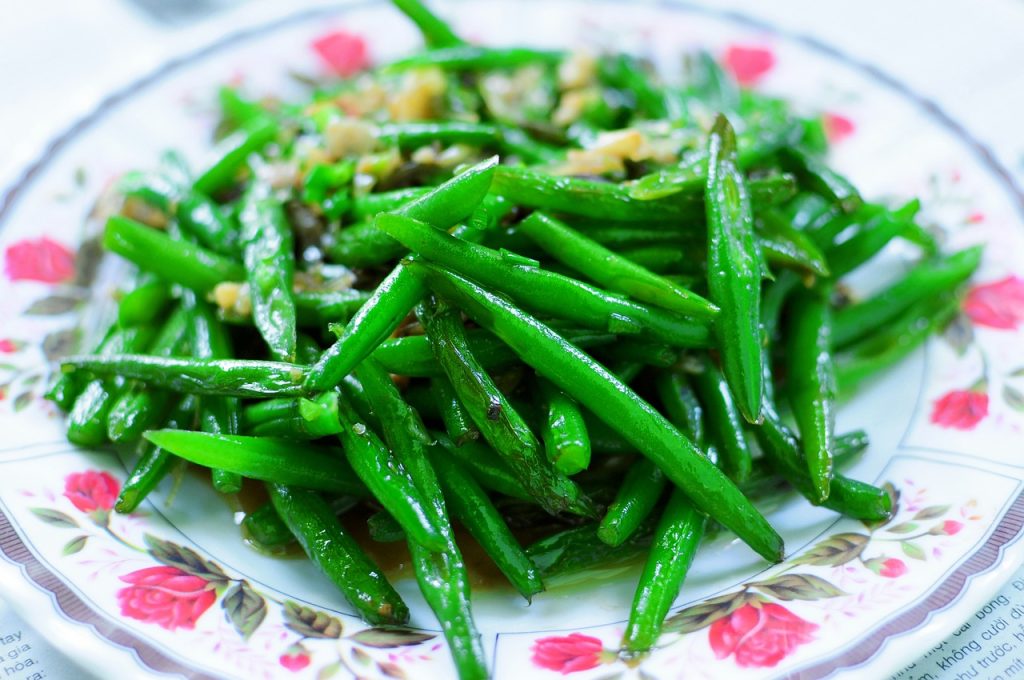
Description
Green beans (Phaseolus vulgaris), also known as string beans or snap beans, are popular legumes that belong to the family Fabaceae. They are cultivated for their tender, edible pods which are harvested and consumed before the pods have matured. The pods are typically long and slender, ranging from 4-8in. high. The color of the pods may vary , but it is generally a vibrant green, giving the pods their name.
Green beans are low in calories and rich in nutrients. They are a good source of vitamins such as vitamin C, vitamin K, and folate. They can be sautéed, steamed, stir-fried, or included in salads and casseroles.
| Botanical name: Phaseolus vulgaris | Propagation: Seeds |
| Common name: Green beans, snap beans, string beans, haricot beans | Soil type: Loam, sandy loam |
| Family: Fabaceae | Soil pH: 6.0-7.5 |
| Plant type: Annual | Temperature: 14-320C |
| Hardiness zones: USDA zones 2-11 | Light: Full sun |
| Mature size: 2-15 ft. tall, 2-3 ft. wide | Spacing: 2-4in. |
| Flower color: White, purple | Pollination: Self pollination |
| Time to harvest: 50-60 days | |
| Native area: Central and South America |
Temperature requirements
Green beans are best grown at a temperature range of 14-320C. The plants are unable to withstand frost and growing them under very high temperatures leads to poor yield.
Soil requirements
Green beans are capable of growing in a wide range of soils ranging from sandy loam soil to clay. However, for optimum growth, plant green beans in well drained, sandy loam soil that is rich in organic matter with a PH of 6.0-7.5.
Sun requirements
Green beans prefer to grow in an area that receives full sun (at least 6-8 hours of sunlight per day).
Types of green beans
Green beans are divided into two types; bush type and pole/vine type. They differ in patterns of growth but produce identical beans.
Bush type
Bush variety of green beans grow in a branched format forming a bush. They are easy to manage, do not require staking and mature faster than the vine type.
Pole/Vine type
Pole varieties require a pole or trellis for support. They grow to a height of 6-10ft but can reach a height of 15ft. Pole beans have a longer harvesting season compared to bush beans.
Some popular varieties of green beans include ‘Provider’ (a bush bean), ‘Blue Lake’ (a classic pole bean), and ‘Haricot Vert’ (a French variety known for its slender, gourmet-quality pods).
When to plant Green beans
Plant green beans when all danger of frost is gone, around mid to late spring. A light frost is capable of killing all your beans in the garden.
In areas where there is no frost, green beans can be planted at any time of year, but best at the beginning of the rainy season, so that they can benefit from the rains.
For a continuous harvest, you can practice successive planting by sowing additional batches of green bean seeds every two weeks or ten days.
Garden preparation
Conduct a soil test to determine the pH level and nutrient content of your soil. Green beans prefer slightly acidic to neutral soil with a pH range of 6.0 to 7.5.
Add organic matter, such as compost or well-rotted manure, to improve soil structure and fertility.
Remove any weeds, rocks, or debris from the planting area. Weeds compete for nutrients and water with plants, affecting the growth of green beans.
Use a garden tiller or a hoe to loosen the soil to a depth of about 6-8 inches. This helps with root penetration and water absorption.
Based on the soil test results, add a balanced fertilizer with equal amounts of nitrogen (N), phosphorus (P), and potassium (K) to promote healthy plant growth. Follow the recommended application rates on the fertilizer package.
How to Plant Green beans
Green beans are planted by sowing seeds directly into the seed bed.
Ensure that you are using high quality seeds by purchasing them from a reputable garden center.
Green beans can be planted in rows or mounds. If planting in rows, space them about 18-24 inches apart. Mound planting involves creating raised rows that are 6-8 inches high and 12-18 inches wide.
Sow green bean seeds directly into the soil, about 1-2 inches deep. Space the seeds 2-4 inches apart in the row.
If you are using pole beans, provide a support structure like trellises or stakes for the plants to climb.

Starting seeds indoors
Alternatively, you can start seeds indoors, two weeks before planting outdoors. Transplant seedlings into the garden when soil temperatures are warm enough to promote growth of green beans (around mid to late spring).
Care and maintenance
Watering
Green beans require a regular supply of moisture for optimal growth and yields. Water is most essential during early growth and during flowering. Water stress at flowering stage causes flower abortion resulting into poor bean yield.
Weeding
Growth of weeds results into poor yields because weeds compete with plants for water, nutrients and sun light and are faster growing than beans.
Carry out first weeding 2-3 weeks after plants have emerged and second weeding 3 weeks later. Avoid weeding during flowering time to avoid flower shed.
Green beans have shallow roots, therefore, be careful while weeding; you can dig out weeds in a small garden by hand or use a recommended herbicide in a large field.
Fertilizing
Apply organic manure to the soil or artificial fertilizers like CAN in recommended amounts. Avoid applying excessive nitrogen as it promotes excessive foliar growth at the expense of pod formation.
Harvesting Green beans
Green beans are ready for harvest 50-60 days after planting and thereafter harvesting continues up to 2 months. Green beans achieve best eating quality when the pods are not yet fully grown with young seeds inside).
Harvest by cutting off pods with a sharp knife with the stalks attached in the early morning when temperatures are still low.
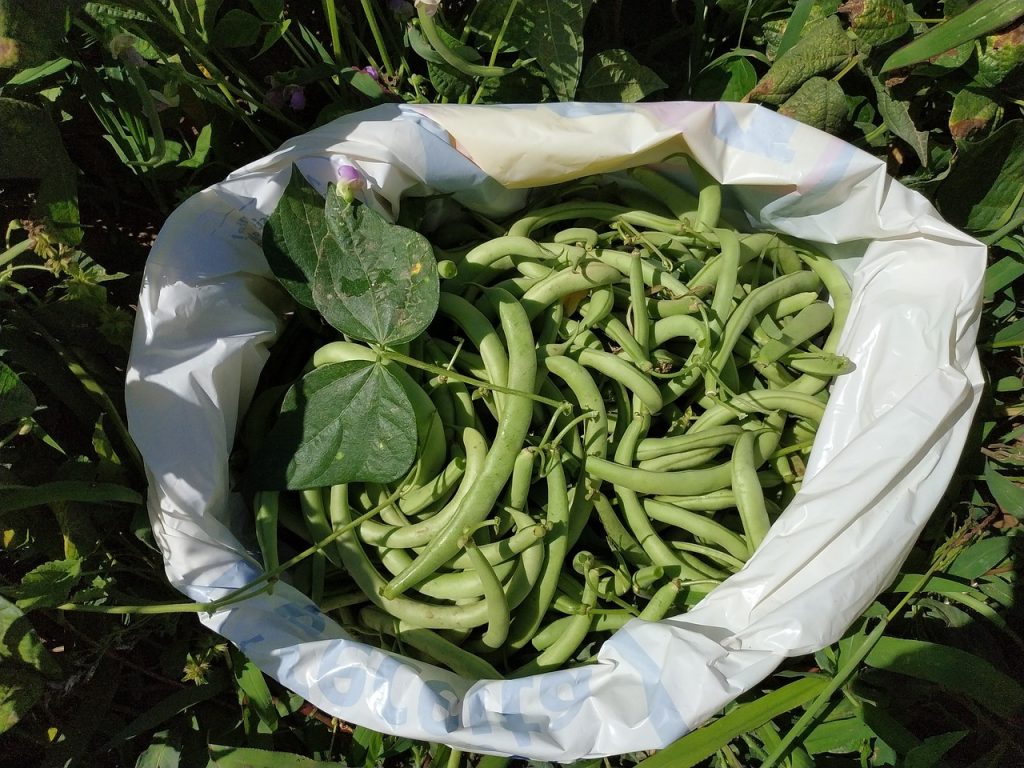
Storage
Green beans can be stored in a refrigerator at 7-80C and 95-100% RH for up to 1 to 2 weeks.

